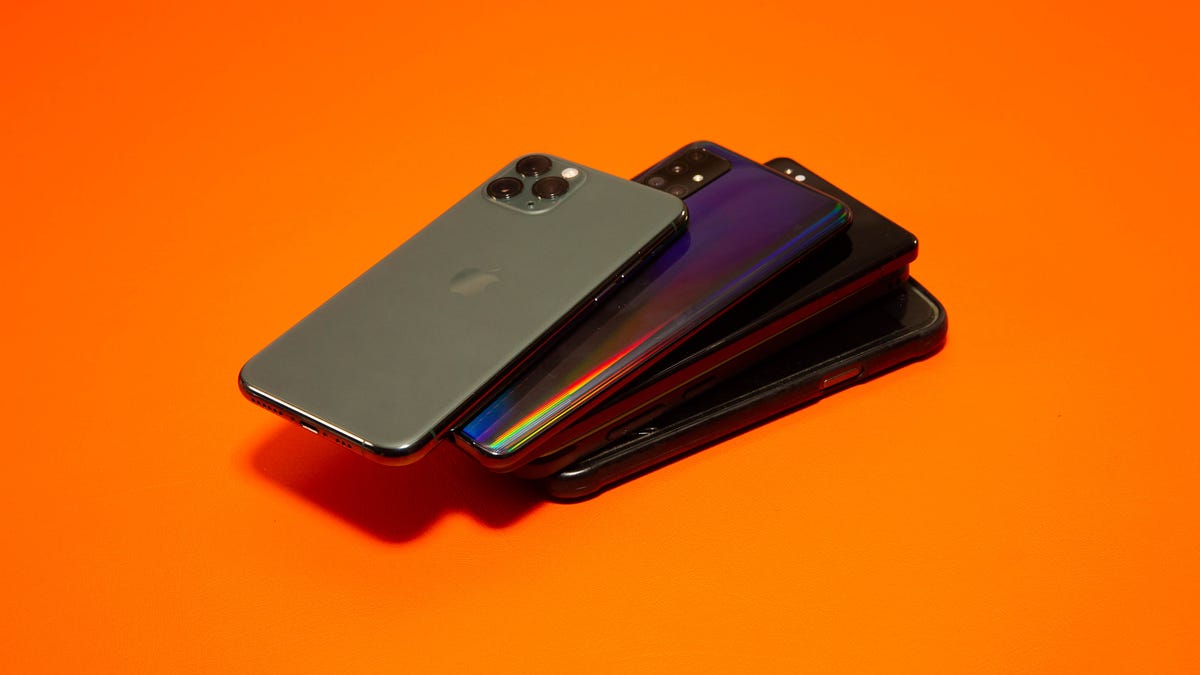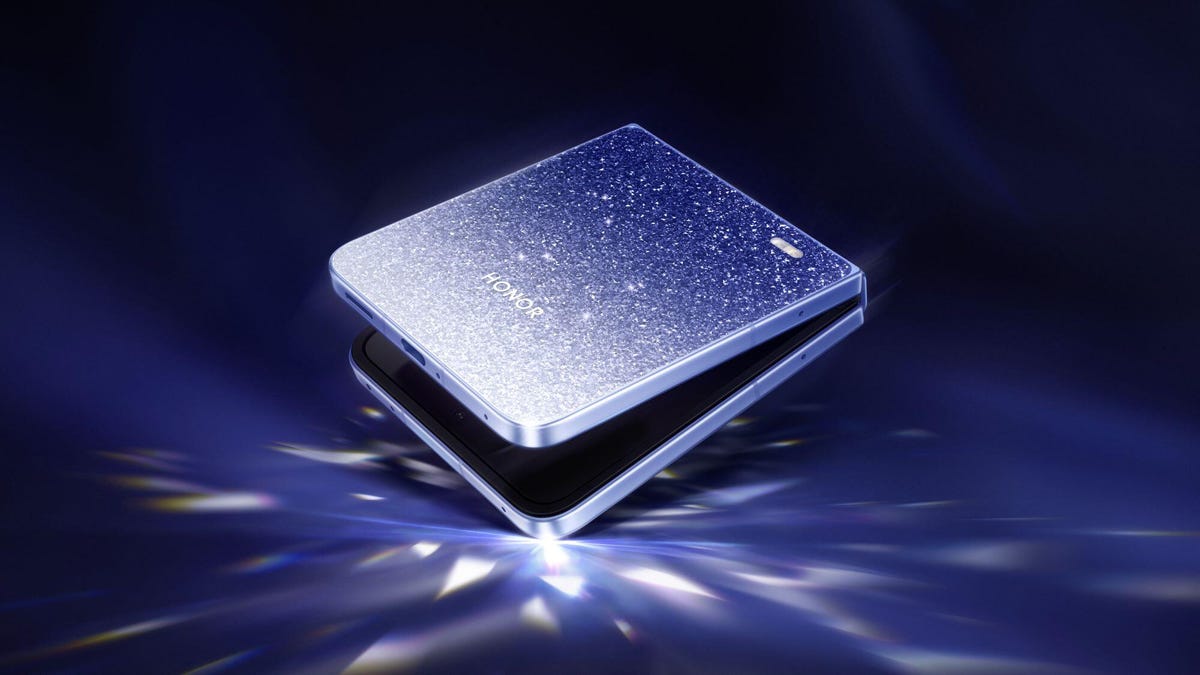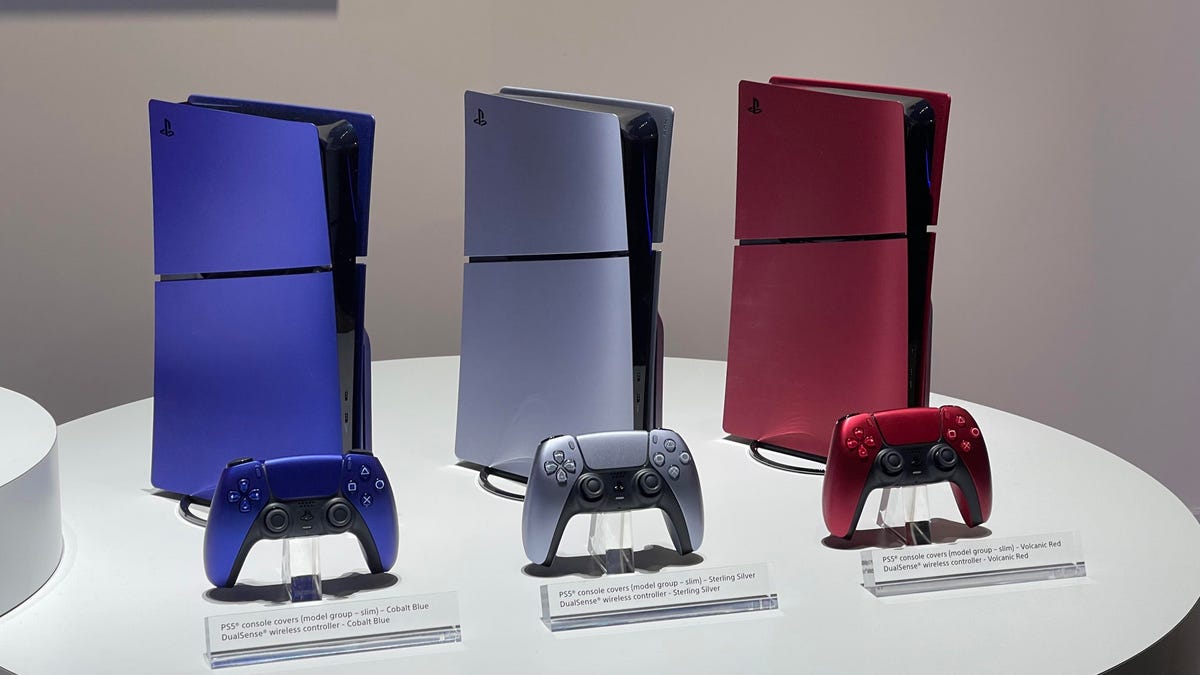Technologies
Best Phones Coming in 2023: Galaxy S23, iPhone 15 and More
Expect to see new foldables, iPhones with USB-C and more powerful phones in smaller packages.

If we can believe all the rumors and leaks, Apple, Samsung, Google and OnePlus may have a whole new wave of new phones coming this year.
Samsung and OnePlus will be among the first to release new devices. Samsung is expected to announce the Galaxy S23 on Feb. 1, while the OnePlus 11 5G will launch globally on Feb. 7.
Though it’s hard to predict exactly what’s in store for the smartphone industry in 2023, it’s possible to make some educated guesses, because many companies stick to the same launch routine each year. The iPhone 15 lineup, for example, is expected to arrive in September, possibly with USB-C charging for the first time. The Galaxy S23 Ultra could have Samsung’s new 200-megapixel camera sensor.
Such launches would come after smartphones took subtle but important steps forward in 2022. The iPhone 14, for example, gained satellite connectivity for emergencies and car-crash detection, while Google found more ways to make use of its custom Tensor chip in the Pixel 7 and 7 Pro. Samsung, meanwhile, gave its flagship Galaxy S lineup a fresh look and an upgraded camera.
Here are the new phones we’re likely to see in 2023, based on previous launch cycles, rumors and reports.
Apple iPhone 15 lineup
What we’re expecting: Apple’s new iPhone family usually launches in September, and we have no reason to believe 2023 will be any different. The adoption of USB-C charging is one of the biggest changes we’re expecting to see on Apple’s next-generation iPhones.
The European Union recently mandated that all new phones sold in the region must support USB-C charging by 2024. Apple said it would comply with these rules but did not specify whether that means we’ll see a shift to USB-C starting in 2023. It’s also not confirmed if a USB-C iPhone would get a global release, or if it would remain solely a European model.
Otherwise, we’re likely to see routine changes such as some camera upgrades and a new processor. TF International Securities Analyst Ming-Chi Kuo, who is known for making pretty accurate predictions about upcoming Apple products, tweeted that Apple may do more to distinguish the iPhone 15 Pro from the regular iPhone 15.
It already made a step in that direction with the iPhone 14 generation by keeping features like the Dynamic Island and new A16 Bionic processor exclusive to the Pro line. What’s more interesting, however, is the idea that Apple could further differentiate the larger iPhone 15 Pro Max from the smaller iPhone 15 Pro, according to Kuo.
The main difference between the regular Pro and Pro Max comes down to screen size. Giving the Pro Max some extra perks could further convince shoppers to splurge on Apple’s biggest (and most expensive) iPhone. Bloomberg’s Mark Gurman also believes Apple could change the name of the iPhone Pro Max to the iPhone Ultra in the future to better align with other products like the Apple Watch Ultra.
Why I’m excited about it: The iPhone’s long-anticipated transition to USB-C is arguably the biggest reason to get excited about Apple’s next smartphone. The switch means iPhone users will finally be able to charge their iPhone, iPad and Mac with the same type of charging cable, reducing friction and making the iPhone that much more convenient. I’m also looking forward to seeing whether Apple further distinguishes the iPhone 15 Pro Max from the iPhone 15 Pro. I’ve argued that Apple needs to give its supersized iPhones more functionality that takes advantage of their larger screens, similar to the iPad.
OnePlus 11 5G
What we’re expecting: The OnePlus 11 5G is already available in China, but the new phone will be launching globally on Feb. 7. Based on what we’ve learned from OnePlus China’s website, the new phone will have a 6.7-inch OLED screen with a 120Hz refresh rate, Qualcomm’s Snapdragon 8 Gen 2 processor and 100-watt fast charging. That’s a step up from the 80W fast charging that OnePlus offered on last year’s device, although unfortunately those speeds were capped at 65W on the US model.
The OnePlus 11 5G will also have a 50-megapixel main camera, 48-megapixel ultrawide camera and 32-megapixel telephoto camera. That lines up with previous specifications from well-known leaker Steve Hemmerstoffer that were published on the blog GadgetGang.
Why I’m excited about it: For a company that made its name as the «flagship killer,» OnePlus’ prices have inched closer to those of the rivals it aims to undercut in recent years. That said, OnePlus still has a reputation for selling reasonably priced devices that pack a lot of high-end features such as superfast charging.
The OnePlus 10 Pro came really close to being a superb iPhone competitor, as my colleague Andrew Lanxon wrote when he reviewed the device. But a slightly disappointing camera and restrictions such as a lack of 80-watt charging in the US held it back from being as great as it could be. Hopefully OnePlus addresses these criticisms in its next-generation device.
Samsung Galaxy S23 lineup
What we’re expecting: Based on the rumors, Samsung’s Galaxy S23 could bring some noteworthy upgrades to the camera and design — two areas that have traditionally been a big focus for the South Korean tech giant.
The rumored Galaxy S23 Ultra could include a 200-megapixel main camera. In mid-January, Samsung announced a new image sensor capable of taking 200-megapixel photos, fueling more speculation that it will arrive in the Galaxy S23 Ultra.That sounds like a huge jump from the Galaxy S22 Ultra’s 108-megapixel main sensor on paper.
Samsung may also give the regular Galaxy S23 and S23 Plus a tweaked design that more closely matches that of the Ultra model. Images from reliable leaker Hemmerstoffer suggest Samsung will eliminate the camera bump from the S23 and S23 Plus, replacing it with the protruding lenses found on the Galaxy S22 Ultra. Images were published on the tech blogs Digit and Smartprix in partnership with Hemmerstoffer.
Although we don’t know precisely what to expect in terms of performance, Samsung usually puts Qualcomm’s latest mobile chip in the new version of its phones that launch in the United States and certain other markets. That means we will likely see the Qualcomm Snapdragon 8 Gen 2 in Samsung’s next Galaxy phone. The new chip offers better power efficiency, ray tracing for improved aesthetics in mobile games and upgraded AI that can better separate you from your Zoom background, among other enhancements. The analyst Kuo even believes Samsung could ditch its own Exynos processors and rely solely on Qualcomm for the Galaxy S23.
Why I’m excited about it: Smartphone cameras have already gotten so sophisticated that I’m curious to see whether a 200-megapixel sensor actually makes a meaningful difference. Either way, it’ll be interesting to see how Samsung pushes the camera experience forward in the S23 lineup given the increased competition from Google’s Pixel series in recent years. I’m also in favor of the Galaxy S23 and S23 Plus’ rumored design change to more closely resemble the Galaxy S23 Ultra. Based on the renders, it looks cleaner and sleeker compared with the Galaxy S22’s camera bump.
Google Pixel 7A
What we’re expecting: If Google maintains its tradition, we could see a cheaper version of the Pixel 7 known as the Pixel 7A launch in the spring or summer time frame. Rumors about the Pixel 7A are scarce right now. But developer Kuba Wojciechowski says he found details possibly pertaining to the Pixel 7A in the Android codebase, suggesting that some fairly significant upgrades are in store.
Wojciechowski’s findings indicate the Pixel 7A could have a screen with a higher refresh rate of 90Hz and wireless charging — two characteristics that are noticeably absent from the Pixel 6A. Leaked renders from Hemmerstoffer that were once again published on Smartprix also suggest the Pixel 7A will have a very similar design as its predecessor.
The Pixel 7A could also include the same Tensor G2 processor that powers the Pixel 7 and 7 Pro as well as a camera setup that includes wide and ultrawide sensors. That’s if the Pixel 7A follows in the same footsteps as the Pixel 6A, of course.
Why I’m excited about it: Google’s A-series Pixel phones are seriously impressive from a value standpoint. That’s why the Pixel 6A has received a CNET Editors’ Choice award and is our favorite Android phone under $500. If Google manages to address the Pixel 6A’s very few shortcomings while maintaining the same price of $449, it’ll be an even more formidable challenger to Samsung in the affordable phone market.
Google Pixel 8 lineup
What we’re expecting: Google’s Pixel 7 and 7 Pro have only been out since mid-October 2022, but rumors have already started to surface about the Pixel 8 family. German tech blog WinFuture reports that it found references to two unreleased Pixel smartphones in publicly available code. The findings indicate that these two devices are codenamed «Shiba» and «Husky» and that they’re powered by a new processor codenamed «Zuma.» The code also suggests these devices will run on Android 14 and include 12GB of RAM, according to WinFuture.
Why I’m excited about it: There haven’t been many rumors about the expected Pixel 8 and 8 Pro, which means there isn’t too much to get excited about yet. But what I’m most interested in is what new features Google’s next-generation chip will bring to its future phones. Google’s current Tensor chips have enabled features that seem practical and useful in everyday life, such as Magic Eraser and Face Unblur for improving photo quality and the ability to add speaker labels to transcripts in the Recorder app. That makes me excited about where Google could take things next.
Google Pixel Fold
What we’re expecting: Google hasn’t entered the foldable phone race yet, but that could change soon. Google may release a foldable phone in 2023 that looks like the Oppo Find N, according to 9to5Google. YouTube personality Dave2D says he received a blank model showing what the rumored Pixel Fold’s design could look like, and it kind of resembles Microsoft’s Surface Duo.
Developer Kuba Wojciechowski also reportedly discovered clues in the Android 13 beta hinting at a possible foldable Pixel device. The code suggested the phone would have a main, telephoto and ultrawide camera just like most premium phones, along with the same inner selfie camera as the Pixel 6.
Why we’re excited about it: We won’t know anything for certain unless Google announces a foldable phone. But there are a couple of reasons why I’m excited about the idea of a Pixel Fold.
Google typically undercuts Samsung and other phone makers on price, meaning the Pixel Fold could end up being fairly affordable compared to competitors. Foldables are also still largely a novelty. They appeal to early adopters, but most people still don’t really see the value in foldable phones just yet. Foldables phones are only expected to have accounted for 1.1% of the global smartphone market in 2022, according to The International Data Corporation’s estimate.
Since Google operates Android and has a history of coming up with unique features for its regular Pixel phones, I’m hoping it’ll do the same for a Pixel Fold. With its current Pixel devices, Google has added helpful features like the ability to sharpen photos that are out of focus and have Google Assistant wait on hold for you. If it does release a foldable, I’d like to see it follow the same approach and develop creative, useful features that take advantage of a foldable screen.
Samsung Galaxy A54 5G
What we’re expecting: Samsung may be best known for its Galaxy S devices, but its series of Galaxy A phones are worth your attention if you’re shopping on a tighter budget. The next phone in this series is expected to be called the Galaxy A54 5G, following the Galaxy A53 5G’s launch last spring.
Based on the few leaks that have surfaced so far, the Galaxy A54 5G will be a modest improvement over the A53 5G. It’s expected to have a 6.4-inch screen, which is slightly smaller than the A53’s 6.5-inch display, and a triple rear camera. That’s according to the leaker Hemmerstoffer, who shared with the tech blog 91Mobiles renders purporting to show the Galaxy A54 5G’s design. A report from the Dutch tech site Galaxy Club also suggests the A54 5G could have a slightly larger battery than its predecessor.
Why I’m excited about it: When I tested the Galaxy A53 5G around the time of its launch, I thought it felt much more expensive than it actually was. It’s not perfect, but Samsung provides a well-rounded package for the price with the Galaxy A53 5G. I’m hoping the success of Google’s Pixel A series motivates Samsung to up its budget phone game even further.
Samsung Galaxy Z Fold 5
What we’re expecting: Even though foldable phones are still new to most people, Samsung’s Galaxy Z Fold will be on its fifth generation in 2023. The next version of Samsung’s phone-tablet hybrid could have a slot for storing Samsung’s S Pen stylus, a lighter design and a less noticeable crease, according to Korean news outlet The Elec. The report didn’t definitively say the Z Fold 5 will have these improvements, but did say Samsung has cited them as barriers that must be overcome to make foldable phones more popular.
Otherwise, we can probably expect to see routine improvements to the camera and processor in the Galaxy Z Fold 5. Samsung also added some new multitasking features to the Z Fold 4 this year, such as the ability to use the bottom portion of the screen as a mini trackpad when the display is folded halfway. So there’s a chance we’ll see other software enhancements in the future, too.
Samsung typically releases its new foldable phones in August, meaning we’re likely to see the next Z Fold around that time.
Why I’m excited about it: The Galaxy Z Fold 5 needs a lot more than an included S Pen to bring foldables into the mainstream. But making the S Pen a bigger part of the experience could go a long way in further defining who the Z Fold is for and why it exists in the first place. Samsung is promoting the Z Fold 5 as a productivity-oriented device, so having an embedded S Pen seems like a natural move. The Galaxy Z Fold 4 and Z Fold 3 are both compatible with the S Pen, but they must be purchased separately.
Samsung Galaxy Z Flip 5
What we’re expecting: Samsung’s next flip phone may have a larger cover screen and a less noticeable crease, according to Ross Young, co-founder and CEO of Display Supply Chain Consultants. Ross recently tweeted that the Z Flip 5 will have a cover display measuring around 3 inches and a new hinge design that could make the crease more subtle. That would represent a sizable increase from the current Z Flip 4’s 1.9-inch cover screen. Like with the Z Fold 5, there’s a chance we’ll see general improvements to camera quality and software as well as a new processor.
Why I’m excited about it: Making the cover screen slightly larger would address one of the Z Flip’s biggest shortcomings. As my colleague Patrick Holland wrote in his review of the Z Flip 4, the cover screen is the biggest area where Samsung could be doing more. I’m also hoping to see longer battery life from the Z Flip 5 considering that’s another area where Samsung’s current flip phone could use some improvement.
Overall
It seems like some of the biggest improvements we’re expecting to see across the board on new smartphones in 2023 will have to do with battery and charging improvements, as well as camera and design upgrades. We’ll know more throughout the year as more reports and rumors arrive, and as Samsung, OnePlus, Apple and Google actually debut their devices.
Technologies
Honor’s Shimmering Magic V Flip 2 Has Arrived to Outshine Samsung’s Galaxy Flip
The flip foldable, releasing in China, includes a limited edition model co-designed by Jimmy Choo.

Honor has unveiled a new flip phone in China, and the company is billing it as, «the ultimate selfie device.» The Magic V Flip 2 includes an ultra-wide portrait mode, AI photography features and a playful, sparkly design.
The Magic V Flip 2 adds another device to Honor’s increasing lineup of foldable phones. So far, it’s only releasing the Magic V Flip 2 in China, starting on Aug. 28. It will sell for RMB 5,499 or about $766 USD.
The Magic V Flip2 appears to be geared toward influencers and fashionistas — a limited edition version of the new phone is co-designed by fashion icon Jimmy Choo and is, «inspired by the subtle shimmer of crystals.» It comes in deep sea blue and has a crushed stardust design, according to Honor’s press release.
Honor is also touting the phone’s 5,500mAh battery, which it says is the largest on the market for a flip phone. The also phone features a 200-megapixel main camera, a 50-megapixel ultra-wide camera and a 50 MP selfie camera. The Magic V Flip 2’s closest competition may be Samsung’s Galaxy Flip 7 FE, which is about $200 more expensive than the Magic V Flip 2.
Technologies
Silksong, Long-Awaited Hollow Knight Spinoff, Gets Release Date: Sept. 4
Announced in 2019, Team Cherry’s follow-up is coming sooner than expected, and it’s on Game Pass on Day 1.

Hollow Knight: Silksong is the follow-up, announced back in 2019, to one of the most beloved indie games of the last decade. In a special announcement video on Thursday, Australian developer Team Cherry revealed that the wait is almost over.
Silksong will be released on Sept. 4, according to the new trailer. The almost two-minute video reveals some of the new enemies and bosses in the upcoming spinoff and ends with the surprise release date.
Originally, Silksong was going to be a DLC for Hollow Knight. However, numerous delays resulted in it being pushed back again and again. Glimpses of the game would show up here and there over the years, but it was this year that it received the most attention from Nintendo as part of its Switch 2 lineup, and from Microsoft, which confirmed it would be available on Xbox Game Pass.
Hollow Knight: Silksong will be available on PC, Switch, Switch 2, Xbox One, Xbox Series X and Series S, PS4 and PS5. It will be available on Day 1 for Xbox Game Pass subscribers.
Technologies
PS5 Prices Go Up Today. Here’s How Much and Why
You can expect to pay more for a new PlayStation, thanks to «a challenging economic environment.»

Sony will increase the prices of its PlayStation 5 consoles in the US, starting today. This follows the trend of console manufacturers such as Microsoft and Nintendo raising prices for their hardware in response to tariffs.
The PlayStation-maker posted about the price change Wednesday. The jump in price is $50 more than the current price for each model.
The new prices are:
- PlayStation 5: $500 to $550
- PlayStation 5 Digital Edition: $450 to $500
- PlayStation 5 Pro: $700 to $750
«Similar to many global businesses, we continue to navigate a challenging economic environment,» Sony said in a post about the price increase.
As of Thursday morning, retailers and Sony’s online store have yet to update the console prices. This jump in price also will likely affect recently released PS5 bundles such as the Astro Bot bundle and Fortnite Cobal bundle.
Sony says accessories have not been affected by the change and this cost hike only affects the US.
In May, Microsoft increased the price of the Xbox Series consoles and Nintendo hiked the original Switch console price and Switch 2 accessories this month.
While the companies didn’t point to the tariffs instituted by President Donald Trump as the reason for the hardware price jump, it would explain the trend in recent months.
-

 Technologies3 года ago
Technologies3 года agoTech Companies Need to Be Held Accountable for Security, Experts Say
-

 Technologies2 года ago
Technologies2 года agoBest Handheld Game Console in 2023
-

 Technologies2 года ago
Technologies2 года agoTighten Up Your VR Game With the Best Head Straps for Quest 2
-

 Technologies4 года ago
Technologies4 года agoVerum, Wickr and Threema: next generation secured messengers
-

 Technologies4 года ago
Technologies4 года agoGoogle to require vaccinations as Silicon Valley rethinks return-to-office policies
-

 Technologies4 года ago
Technologies4 года agoBlack Friday 2021: The best deals on TVs, headphones, kitchenware, and more
-

 Technologies4 года ago
Technologies4 года agoOlivia Harlan Dekker for Verum Messenger
-

 Technologies4 года ago
Technologies4 года agoiPhone 13 event: How to watch Apple’s big announcement tomorrow
